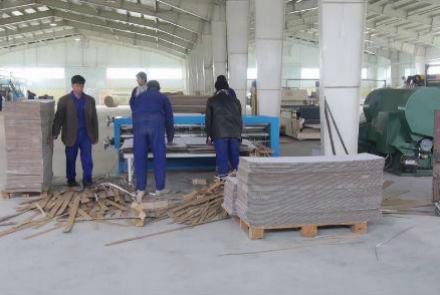Afghanistan must first create a conducive business environment for its domestic producers to grow, create jobs and survive prior to fantasizing economic growth through forging trade linkages with the bigger economic players across the Asian continent. Since the past one decade, hundreds of large and medium scale domestic manufacturers have shut down their operations across the country, leaving hundreds of thousands of Afghans unemployed.
Earlier this year, the Central Statistics Office of Afghanistan in a press conference confirmed that unemployment rate peaked over 40 percent, demonstrating an unprecedented increase of 15 percent since 2015. Subject experts in the country claim that the unemployment rate is higher than what the government had declared, accusing the government of reluctance in unveiling the actual rate for unemployment.
Statistically, there is a clear relationship between a country’s unemployment rate and the growth of its economy. In its most basic form, a country’s gross domestic product (GDP) may be lost when the unemployment rate is high given the total output depends on the amount of labor used in the production process, so there is a positive relationship between output and employment and a negative relationship between output and unemployment.
Since the Soviet Invasion of 1979, Afghanistan has been the scene of a series of conflicts that have continued for nearly four decades. Despite extensive financial assistance by the international community since the fall of the Taliban in 2001, the country is still in a state of political and economic chaos. The poverty and unemployment rates are alarmingly high and there is not a lot of opportunities for positive engagement.
As part of a two-day Conference on Afghanistan attended by the Leaders of the National Unity Government (NUG) and the international community last November in Geneva, President Ashraf Ghani attended a private sector side-event where he stressed the significance of the market building, firms’ competitiveness, renewable energy and skills development in Afghanistan. Astonishingly enough, the development of domestic manufacturers and their crucial role in job creation and economic growth was barely touched upon.
Prior to Geneva’s Conference and as part of the NUG’s quest for boosting trade and economy in the country, the Chief Executive Abdullah Abdullah led a high-level delegation to Jakarta in October to discuss a range of issues including trade with Indonesian government as well as the private sector after having had wound up an Annual India-Afghanistan International Trade and Investment Show in the metropolitan city of Mumbai.
Presently, it is estimated that over 80 percent of the consumption goods in Afghanistan are imported from a range of countries, mainly China, Iran, Pakistan, and Central Asia. The country is overwhelmingly dependent on foreign imports and its economy is unable to stand on its feet by producing domestically. The vast inflow of imports to the country has exacerbated the conditions for domestic manufacturers to grow, compete and continue to sustain in the market. Since the past several years, hundreds of newly-established manufacturing firms shut down their operations and left hundreds of thousands of Afghans unemployed.
While I appreciate the efforts put forth by the NUG leaders in the cited events, however, we should not forget that Afghanistan is lacking a viable and strong sector of production. The government, that is supposed to act as a regulator and supporter in the market economy model, has not been able to provide a conducive business environment for Afghan manufacturers to invest with the peace of mind and certainty that their investment will be safe from unfair competition and price dumping in the market, let alone the incessant instability in the country.
In fact, the absence of any government intervention in the market and the overwhelmingly high inflow of foreign imports has drowned the domestic manufacturers. Many Afghan businesses cannot produce domestic products at a price that is less than the price of imported goods. For instance, in the once sprawling provinces of Herat and Kandahar alone, several hundred factories closed down a few years ago due to price dumping by the neighboring countries.
I understand that importing more goods and commodities offers Afghans an advantage over making purchasing choices with respect to the variety of available goods and commodities in the markets. However, we neglect a fact that our capacity as a country to produce and export is incomparably lower than the gigantic trade partners we are shaking hands with. Inviting excessive imports will only leave our domestic manufacturers more prone to, and times unjust, competition that will eventually force more businesses to close and unemployment to rise higher.
I don’t argue that Afghanistan must ban imports, instead, I propose that besides founding trade ties with our Asian partners, the government must also look into improving the conditions for the domestic producers to grow and survive by introducing an effective and workable policy that can provide interim protection to the domestic producers. Protection can take many forms such as time-bound subsidies, discounted power energy, free land and/or tax exemption. Protection should be given temporarily and withdrawn once the firms stand on their feet and become mature enough to compete in the market. There is much we can learn and replicate from the successes and experiences of the East Asian countries on that front.
It is crucial to note that in many developed and developing countries, competitive and sustainable domestic manufacturers are the main engines of economic growth, upon which sustainable and the much-needed employment will ultimately depend.

Gheyasuddin Saadat is an MBA graduate and an MPA candidate at the National University of Singapore.

